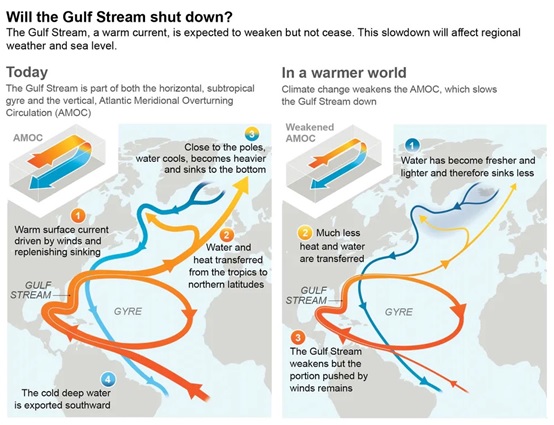Context
-
Among the most alarming findings as laid out in the IPCC 6th Assessment Report released is the effect of climate change on glaciers and the snow cover in the mountains.
-
The IPCC 6th Assessment Report states scientists have ascertained that global warming will have a serious impact on mountain ranges across the world, including the Himalayas.
Key Findings of IPCC 6th Assessment Report 2021
- The average surface temperature of the Earth will cross 1.5 °C over pre-industrial levels in the next 20 years (By 2040) and 2°C by the middle of the century without sharp reduction of emissions.
- The last decade was hotter than any period of time in the past 1,25,000 years. Global surface temperature was 1.09°C higher in the decade between 2011-2020 than between 1850-1900.

- This is the first time that the IPCC has said that the 1.5°C warming was inevitable even in the best case scenario.
- Sea-level rise has tripled compared with 1901-1971. The Arctic Sea ice is the lowest it has been in 1,000 years.
- A rise in temperature has been recorded in the Himalayas, the Swiss Alps and the central Andes, and this has increased with altitude. Such elevation-dependent warming could lead to faster changes in the snowline, the glacier equilibrium-line altitude and the snow/rain transition height.
- Coastal areas will see continued sea-level rise throughout the 21st century, resulting in coastal erosion and more frequent and severe flooding in low-lying areas.
- About 50% of the sea level rise is due to thermal expansion (when water heats up, it expands, thus warmer oceans simply occupy more space).
- Every additional 0.5 °C of warming will increase hot extremes, extreme precipitation and drought. Additional warming will also weaken the Earth’s carbon sinks present in plants, soils, and the ocean.
- Heat extremes have increased while cold extremes have decreased, and these trends will continue over the coming decades over Asia.
- Global Warming will have a serious impact on mountain ranges across the world, including the Himalayas.
- The freezing level height in mountain areas is projected to rise and this will alter the snow and ice conditions.
- Retreating snowlines and melting glaciers is a cause for alarm as this can cause a change in the water cycle, the precipitation patterns, increased floods as well as an increased scarcity of water in the future in the states across the Himalayas.
- The level of temperature rise in the mountains and glacial melt is unprecedented in 2,000 years. The retreat of glaciers is now attributed to anthropogenic factors and human influence.
- It is also virtually certain that the snow cover will decline over most land regions during the 21st century, in terms of water equivalent, extent and annual duration, the report added.
India Specific Findings: IPCC 6th Assessment Report
- Heatwaves and humid heat stress will be more intense and frequent during the 21st century over South Asia.
- Changes in monsoon precipitation are also expected, with both annual and summer monsoon precipitation projected to increase.
- The Indian Ocean, which includes the Arabian Sea and Bay of Bengal, has warmed faster than the global average.
- The report also predicts the increased likelihood of incidents such as the landslide caused by glacial break on Nanda Devi at Chamoli in Uttarakhand earlier this year that caused floods in the region.
Conclusion
- According to the predictions, the projected runoff is typically decreased by contributions from small glaciers because of glacier mass loss, while runoff from larger glaciers will generally increase with increasing global warming levels until their mass becomes depleted.
- All of these changes will pose significant challenges for water supply, energy production, ecosystems integrity, agricultural and forestry production, disaster preparedness and ecotourism.
Environment Current Affairs : Click here
